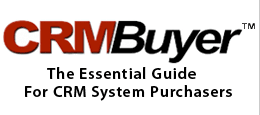Every year around this time I write two columns one on the year that was and another on what I expect the new year to bring. There is no methodology for this process and I believe this lack of method is important. I take a blank screen and fill it up with what has been on my mind for the last year and what made it out through my posts. Here are a few ideas that bubbled up.
Steve Jobs
We lost Steve this year and the outpouring in the media was inspiring. For some reason, many people felt the need to try to reconcile Jobs’ fastidious and demanding personality with the beautiful products he inspired. One who did not was Malcolm Gladwell who placed Jobs in a long continuum of people who did not invent original products but who tinkered with and improved them significantly. The world needs all kinds. That might have been true for the GUI but Jobs still gets high marks for things like iPod (an improvement on Walkman) and especially iPad, iTunes and the store for which there was little if any precursor.
A quote from a Time Magazine (July 10, 2011)review of GM executive Bob Lutz’s book from 2011 “Car Guys vs. Bean Counters” http://amzn.to/sZEwaq
makes an important point: “It’s interesting to note that the one area of the U.S. economy that’s adding jobs and increasing productivity and wealth is also the one that is the most relentlessly product- and consumer-focused: Silicon Valley. The company off Highway 101 that best illustrates this point is, of course, Apple. The only time Apple ever lost the plot was when it put the M.B.A.s in charge. As long as college dropout Steve Jobs is in the driver’s seat, customers (and shareholders) are happy.” Thanks, Steve.
Social, mobile and analytics plus cloud
On deck to assume the Jobs niche in the tech industry and beyond may be chairman and CEO of Salesforce.com, Marc Benioff. To be clear, Benioff and Jobs are very different people in most respects but Benioff has the same blue ocean strategy that Jobs had and a knack for entertaining his customers. Benioff also likes to invent things. He has driven the rest of the industry to embrace social, mobile, analytics and cloud much faster than it would have left to its own devices. This combination of attributes is really all any Martian would need to know to understand the market upon arriving here. The drive to embrace these technologies first is what separates Salesforce from all other conventional CRM companies and is a big reason for the Silicon Valley quote above.
Cloud computing
We’ve been hearing about cloud computing for many years already and interestingly 2011 was a year of a dramatic demonstration of its power in reverse. Target Stores pulled its web site from the cloud into the premises in time to launch a huge marketing campaign featuring Missoni brand clothing. The campaign was so successful that it clobbered the site and crushed the ambitions of any other IT leaders who might still think on-prem will be a workable strategy as we go “all in” on social, mobile and analytics. Right?
Curation
The Missoni fiasco gave me a chance to showcase curation software from Storify. Curation products enable anyone to find and bring together relevant content from the web to produce a one of a kind package of related information that is greater than the sum of parts. Curation plucks gems from the torrent of things rushing by in the digital river (pun!) and it will be an important part of how we use the web in the future.
The Subscription economy
With cloud computing more valuable than ever we see a new idea taking shape called the subscription economy. You probably recognize it and consider it old by some measures. But the interesting thing about the subscription economy is that so far it has been at best held together with bailing wire and spit. Old style ERP systems have been a major impediment to subscriptions and many of us never realized it. I quoted others talking about how ERP has held back business innovation but also about Zuora and others who are pushing the envelope with billing and payment systems that enable subscriptions like never before. Zuora announced its series D round of $36 million recently and I look for them to be a major IPO in the next 24 months.
Blue ocean strategy
In a press conference early in 2011, Benioff said he had no interest in developing an ERP system to complement his company’s growing front office footprint. Without using the words blue or ocean in the same sentence he let us know that there is too much untapped potential in the front office, often in the form of applications of social concepts and business processes that have still not been invented or fleshed out. By the end of this year that approach seems to have put Salesforce into a category of its own as most of the ERP players I watch seem to be focused on re-selling their legacy bases.
Oracle and Salesforce
One such ERP company is Oracle, a self described fast follower, that has nonetheless made big investments in the front office. In 2011 Oracle acquired ecommerce provider ATG for one billion bucks and followed up about six months later with a $1.5 billion acquisition of RightNow. We’ll miss RightNow but Oracle seems to have blue ocean plans of its own regarding retail in the future. Watch this space.
Dreamforce and OpenWorld
We got an eyeful of how competitive the atmosphere is in San Francisco and Silicon Valley when Larry Ellison disinvited Marc Benioff to speak at OpenWorld. At first it looked like a bizarre move by Ellison but later it looked liked improvisational comedy by a couple of masters. It was certainly entertaining. Ellison used the opportunity to announce his own cloud computing and social strategies though true to form I was not shown much product or given a date for general availability for some parts of the product line.
CRM Idol
Speaking of entertainment, Paul Greenberg got the industry organized around the Idol theme in the first annual CRM Idol competition, which I was part of. The concept is still rough around the edges — one wonders how entertaining business ought to be — but it brought the industry together across most of the world’s landmasses and fun was had by all. We discovered some very interesting companies and at least one, Assistly, was bought before the competition even finished. I think Idol has legs if we can get a better set of pre-conditions in place to screen out some companies that are clearly not competitive. Just sayn.
What’s going to get the economy moving again?
Over the summer there was fear of a double dip as the economy seemed to slow but that scare seems to have passed and the tepid recovery continues with job growth in the last 21 months and counting. Not enough jobs to erase a big unemployment number mind you, but progress, slow and steady.
Marketo CEO Phil Fernandez offered his own prescription for recovery saying that the revenue performance management (RPM) methodology that he and others (Eloqua, Cloud9) are promoting could generate as much as $2.5 trillion in new revenue globally. Maybe he’s right, but…
It’s all about energy
In May I was in Chicago to give a talk and noticed the prices for gas were almost hitting the five-dollar mark. The cost of energy, transportation and raw materials all derived from petroleum, hold the key to recovery (and, yes, European bankers and politicians). There’s no longer any slack in the petroleum production system and when demand spikes so do prices and when that happens, the economy cools. We’re in for some uneven performance as long as that is true.
Books I have read recently such as, “The End of Growth” by Richard Heinberg http://amzn.to/vYJesf and “World on the Edge” by Lester R. Brown http://amzn.to/sv0pvy, tell the same story. Nothing grows forever and on a finite planet there are finite resources, which ultimately places a cap on many things. That doesn’t mean doom and gloom but it does mean we need to think about our next steps as a species. Global warming isn’t going away on its own.
All the technologies we’ve been debuting in the last few years will be an important part of the next strategy, especially as we are required to pivot away from dead plants as our energy sources. That’s one vantage point from which I will be evaluating our industry in the new year. The business processes we use are directly related to the technologies we have to work with — the subscription economy is a case in point. Along with helping us make money, our great new technologies must serve our need to get carbon and costs out of our business processes ASAP.
But for now let me simply say thanks for reading my column this year and for your many good observations and comments. I hope you enjoy your year-end celebrations, however you do them.
 I was literally gobsmacked and I had to re-read the post several times. Gartner analyst Robert Desisto—who I don’t know at all—wrote a short post last week saying that today’s SaaS vendors, “will resist to the move to ‘pay as you go’ because it will have a very big impact on their business model predictability” and become “legacy dinosaurs” as his headline said.
I was literally gobsmacked and I had to re-read the post several times. Gartner analyst Robert Desisto—who I don’t know at all—wrote a short post last week saying that today’s SaaS vendors, “will resist to the move to ‘pay as you go’ because it will have a very big impact on their business model predictability” and become “legacy dinosaurs” as his headline said. CRM Magazine/destinationCRM.com
CRM Magazine/destinationCRM.com CRMBuyer
CRMBuyer ForecastingClouds
ForecastingClouds InSide CRM
InSide CRM SearchCRM
SearchCRM Animal Spirits
Animal Spirits Butterfly Economics, Paul Ormerod
Butterfly Economics, Paul Ormerod Competing on Analytics: The New Science of Winning
Competing on Analytics: The New Science of Winning Crowdsourcing
Crowdsourcing Dealing with Darwin, Geoffrey Moore
Dealing with Darwin, Geoffrey Moore Hello, Ladies! Dispatches from the Social CRM Frontier
Hello, Ladies! Dispatches from the Social CRM Frontier Origin of Wealth: Evolution, Complexity, and the Radical Remaking of Economics
Origin of Wealth: Evolution, Complexity, and the Radical Remaking of Economics Strategy and the Fat Smoker
Strategy and the Fat Smoker The Black Swan
The Black Swan The Wisdom of Crowds
The Wisdom of Crowds Twitter
Twitter